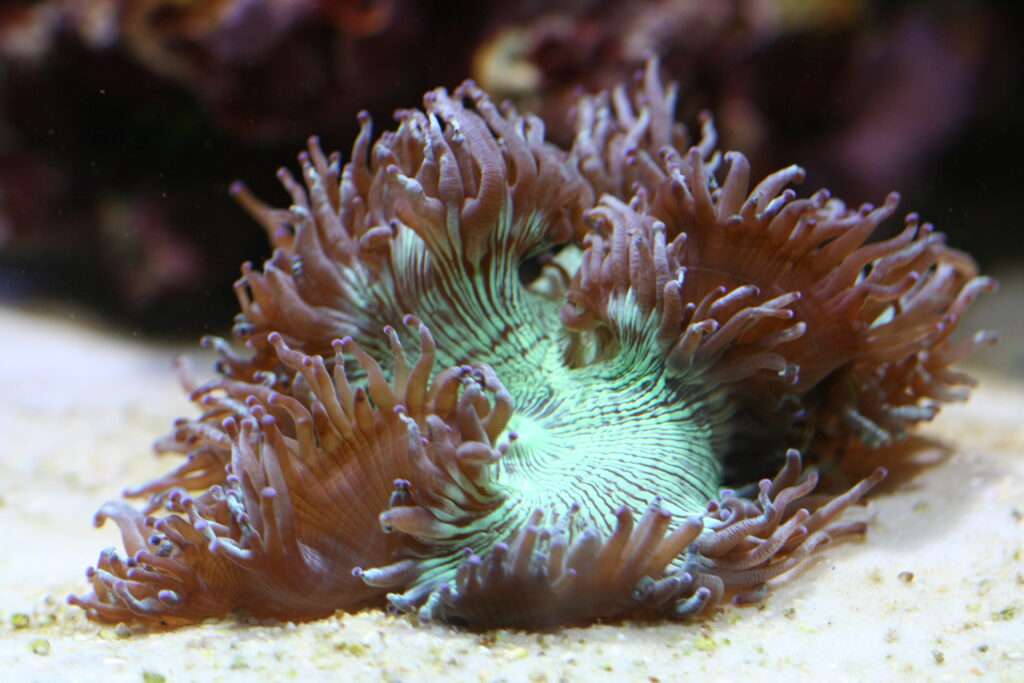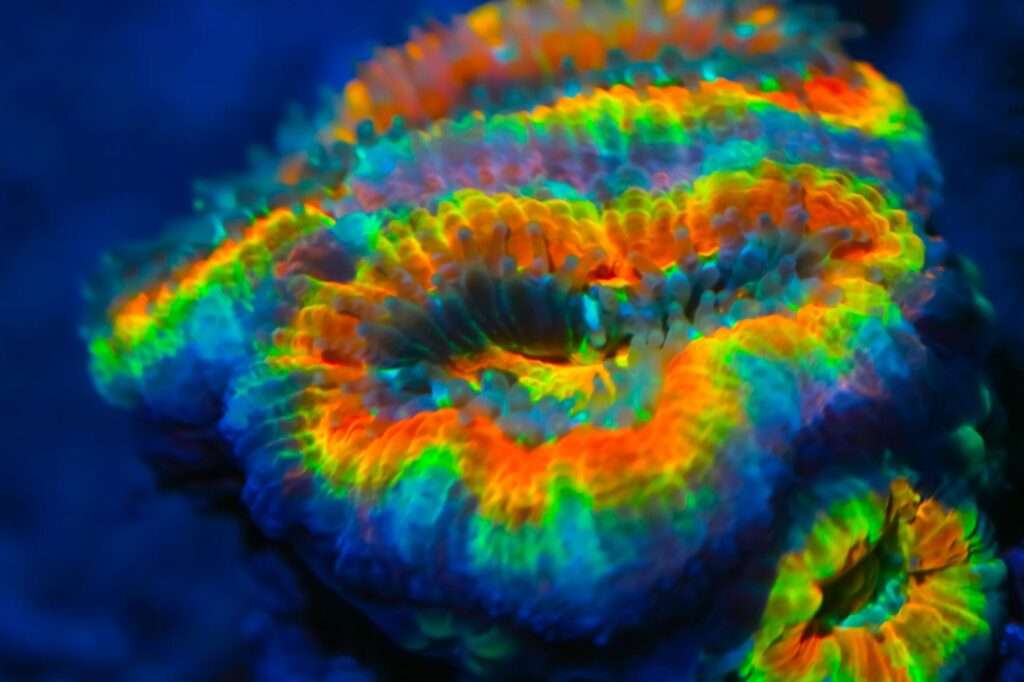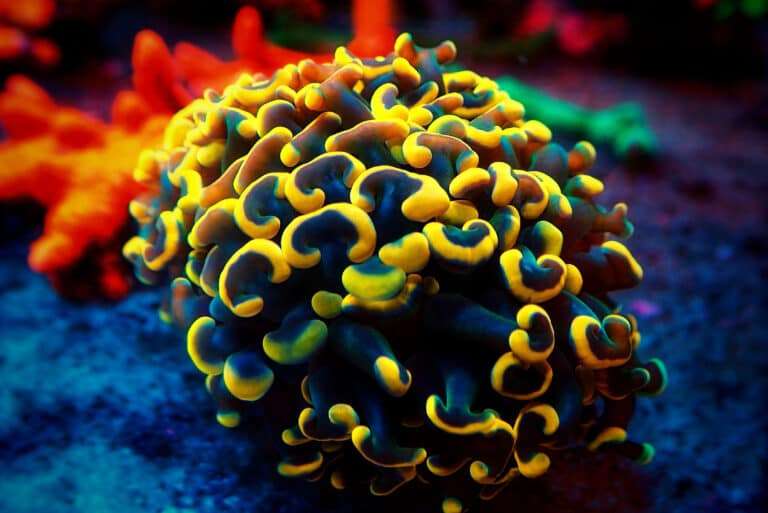
Among large polyp stony (LPS) corals, Catalaphyllia jardinei, known as the Elegance Coral, has enjoyed the highest popularity. This is due to the fact that it is quite alluring. It comes in a variety of hues and typically has bright pink tips that shine when exposed to blue or ultraviolet light. The colors can be brilliant green with cream tentacles, brown and lime green with tentacles that are tipped in blue, orange, or purple, among other hues. Some hues, such as lime green, are suggested to aid in UV defense.
A common coral called C. jardinei can be found in a wide variety of settings. They can burrow through the softer surfaces because of their cone-shaped, wedge-like skeletal structure. They are typically found in soft sand or silt substrates in the water, occasionally in areas where sea grasses frequently entwine with their tentacles.
Habitat
Effortless Coral Saville-Kent first described Catalaphyllia jardinei in 1893. Elegant Coral and Wonder Coral are two more names for this coral. The C. jardinei inhabit lagoonal and inter-reef regions in gently turbid water at depths of up to 131 feet (40 M) or shallower. Sea grasses frequently entwine with the tentacles, and the substrate they prefer to burrow into is soft and frequently muddy. They will live in close proximity to fungiids and other lagoonal dwellers. Strong stinging tentacles enable the C. jardenei to fend off predators and help it grab small prey.
Morphology
The Coral Elegance C. Jardinei may easily burrow into soft soils because of their wedge-shaped, cone-shaped skeletal structure. The top, where the fleshy polyp is located, is quite wide with pointy, thin, bone-like divisions called septa whereas the bottom is pointed. The septa creates valleys with a V shape. The polyps have bulbous tentacles that might be long and narrow with contrasting tips. A number of mouths on their fleshy, broad oral disc covers the “valley” of the septa.
A fascinating side note: Black and blue color morphs were captured by marine author Scott Michael, suggesting there may be many more color possibilities in the water. The C. Jardenei typically measures 8″ (20 cm) in width and 12″ (30 cm) in length.
In Captivity

- Feeding
Catalaphyllia corals have evolved a number of feeding techniques. Many of its nutrients are obtained through a symbiotic interaction with a sea algae called zooxanthellae. They can also take in dissolved organic substances and planktonic creatures as well as food particles from the water column. These corals are constantly hungry in captivity, therefore feeding them regularly with a variety of foods will ensure their best health. A tiny fish or shrimp can also be broken up into very little pieces, and the entire creature can be fed to your Elegance Coral because different portions of the animal have distinct nutritional value
- Social Interactions and Compatibility
Leave lots of space (at least 6 inches) surrounding this coral since catalaphyllia corals can be violent if they come in contact with other corals. There aren’t many neighbours for the Elegance Coral that get along. Any soft corals and algae, particularly caulerpa, should avoid touching them. Members of their family, such as the Anchor Coral will control and injure the Elegance Coral. Even a little polyp stony coral (SPS) that is not aggressive, such as the Elephant Skin Coral can cause harm to the Elegance Coral.
Keep clownfish away from your Elegance Coral since the coral may eventually get stressed to the point of death due to the fish’s constant squirming, which will prevent it from growing. Additionally, bristle worms can infect and irritate their flesh. Small fish are especially vulnerable to C. jardenei’s stings and entanglement because they have a propensity to “fall” from level to level in the aquarium. It is not advisable to keep them with Mandarin Gobies. The Elegance Coral’s tentacles eventually come into contact with the Mandarins as they search for benthic meals, causing them to be stung and eventually die over a period of many days. It is unpleasant to see this. As the poison from the sting begins to slowly kill the victim, first welts form and enlarge.
Table





